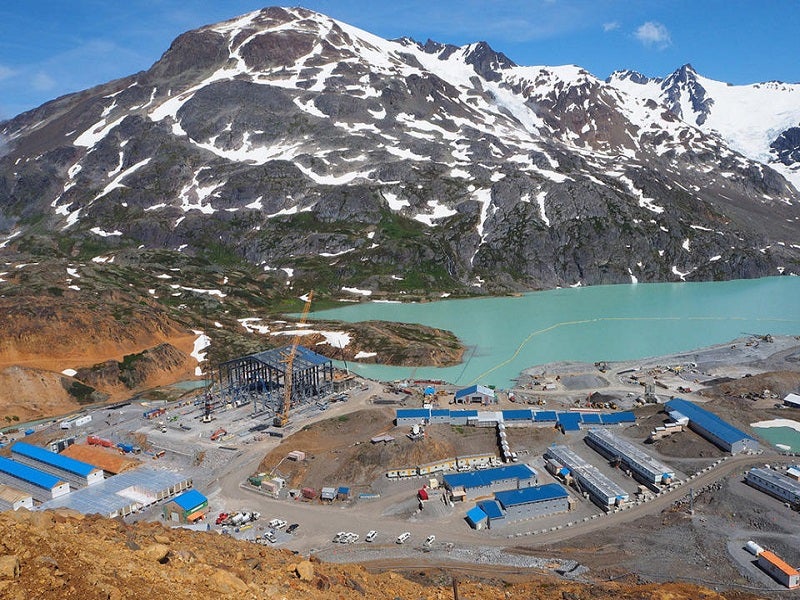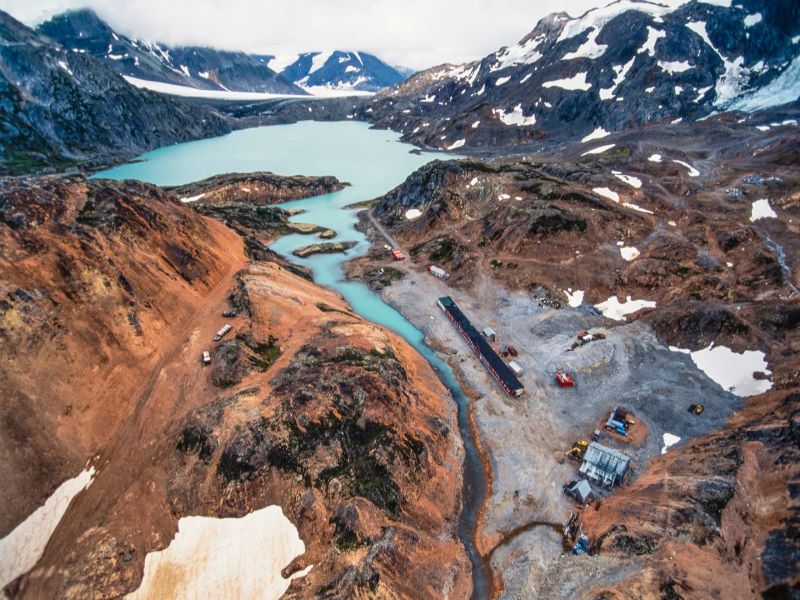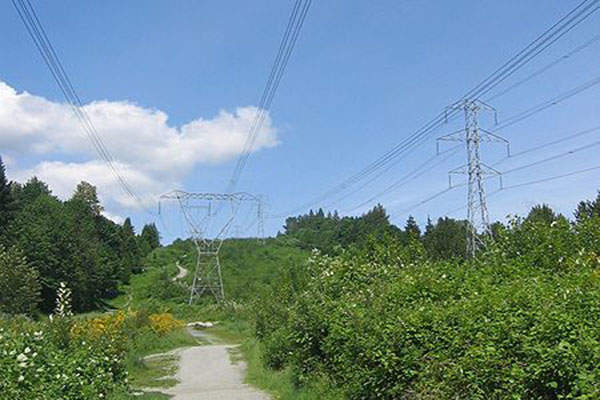The Brucejack underground gold mine has been operational since July 2017. Located in the north-western region of British Columbia (BC), Canada, it is fully owned by Australian company Newcrest Mining.
Canadian precious metal resources exploration and development company, Pretivm Resources, was the previous owner and operator of the mine. In March 2022, Newcrest completed the acquisition of Pretium Resources, under a C$3.5bn ($2.8bn) deal signed in November 2021.
The Brucejack project produces gold-silver dore and gold-silver bearing concentrate.
A feasibility study (FS) for the project was completed in June 2014 and the BC Minister of the Environment and Minister of Energy and Mines granted the environmental assessment certificate in March 2015.
A technical report for the Brucejack mine was published in April 2019. It studied the potential of increasing the mine’s ore output from 2,700tpd to 3,800tpd. An updated life of mine (LOM) plan, based on upgraded resources and reserves estimates, to support a productive mine life of 13 years, was released in March 2020.
The production at the mine was ramped up to 3,800tpd in 2020 while drilling activities continued targeting underground resource expansion. A new mineralised zone was discovered at the Golden Marmot target in the third quarter (Q3) of 221, which proved the district-scale potential of the Brucejack project.
Brucejack location, geology, and mineralisation
The Brucejack project is located approximately 950km north-west of Vancouver and 65km north-north-west of Stewart, BC. The property consists of six mineral claims extended over 3,199.28ha.
The site is largely underlain by volcano-sedimentary rocks belonging to the Lower Jurassic Hazelton Group, which overlay volcanic arc sedimentary rocks of the Upper Triassic Stuhini Group along the westernmost part of the property.
Brucejack is classified as a transitional-to-intermediate sulphidation epithermal stockwork vein system-hosted gold-silver deposit. It is associated with a deeper porphyry system within an active island arc tectonic setting.
Most of the mineralisation at the project is contained in sub-vertical vein, stockwork and subordinate vein breccia systems. The vein /stockwork systems are positioned relatively continuously along strike and possess both parallel and discordant relationships to stratigraphy.
Six major mineralisation zones are identified in the region, namely Bridge, Valley of the Kings (VOK zone), West, Gossan Hill, Shore and SG. Of these, the VOK zone holds the highest grade of gold mineralisation.
The VOK zone sits in a series of west-north-west trending sub-vertical corridors of structurally reorientated vein stockworks and vein breccias. It is spread over 1.2km in an east-to-west direction, 600m north to south, and up to 650m in depth below the topographic surface.
Brucejack gold mine reserves
The proven and probable mineral reserves at the Brucejack mine were estimated at 14.4 million tonnes (Mt) grading 8.3g/t gold and 63.8g/t silver, as of January 2021.
Mining methods at Brucejack Mine
The underground mining operation at the Brucejack mine involves the extraction of 3,800tpd of ore, according to the 2020 LOM plan. A combination of transverse and longitudinal long-hole stoping (LHOS) is used to extract the ore.
Paste backfill and modern trackless mobile equipment are used at the mine.
Located near the concentrator, the main access decline, known as the Valley of the Kings access, is used to access the mine and as a conveyor way. The two conveyors installed at the decline have a combined length of 800m. The movement of the large underground equipment and waste is done via the West Zone portal.
The material loading and transport from the underground mine are performed using a fleet of three load haul dump (LHD) loaders of ten cubic yards capacity each, five LHDs of eight cubic yards capacity each, and 12 30t underground trucks. An internal ramp system is used to connect all levels of the mine to the centrally located crusher.
Mine ventilation is provided via permanent fans installed at each of the main surface portals. The fans force air down the declines through the internal ramps. Dedicated raises connect the working levels to surface in each zone and provide exhaust to the surface.
Ore processing at the Brucejack mine
The original processing flowsheet incorporated a combination of conventional bulk gravity concentration and sulphide flotation. An on-site gold room is used to refine the gravity concentrates to produce gold-silver dore by smelting.
The processing design for the expanded 3,800tpd throughput operation was prepared based on upgrading the existing operation.
The primary jaw crusher, which is located underground, has an average processing rate of 264tph at 60% availability to support the expanded operations. The run-of-mine (ROM) ore is reduced to a size of 120mm and conveyed to the semi-autogenous grinding (SAG) mill located on the surface.
The grinding circuit with two centrifugal gravity concentrators was installed to recover gold/silver nugget grains. The circuit was upgraded to achieve an average feed rate of 172tph to meet the increased throughput.
A vibrating screen sorts the SAG mill discharge, and the oversize is conveyed to a pebble crusher while the undersize is fed to the hydrocyclones. The ball mill, hydrocyclones, and the two centrifugal gravity concentrators are positioned in a closed circuit arrangement. The discharge from the ball mill is sent to the gravity concentrator circuit.
The final gold-silver bearing concentrate is produced by subjecting the rougher and scavenger flotation concentrates through three stages of cleaner flotation. A new 30m³ flotation cell was installed for the third cleaner cell.
The obtained concentrates undergo thickening and filtration before being loaded into customised bulk containers and transported to off-site smelters.
Infrastructure facilities
The access to the Brucejack Gold Mine is through a 73.5km road intersecting Highway 37, north of Meziadin Junction. The mine draws electricity from the BC Hydro grid, through a 57km transmission line between the Long Lake Substation and the project site, via the Knipple substation.
The raw water requirement for the mine is met from a groundwater well, located 1.5km north-west of the mine camp site. An onsite water treatment plant supplies approximately 75m³/d of potable water.
Contractors involved in Brucejack gold project
AMEC Americas (AMEC) was awarded the engineering, procurement, and construction (EPC) management services contract for Brucejack in November 2014 while Snowden Mining Industry Consultants prepared the mineral resource estimates.
Tetra Tech prepared the NI 43-101 technical report for the project, along with P&E Mining Consultants, BGC Engineering, Rescan Environmental Services (Rescan), and AMC Mining Consultants. Valard Construction constructed the transmission line connecting the mine site with the Long Lake substation.
Canada-based engineering services company Stantec was engaged to perform geohazard, line routing, and foundation design assessment for the transmission line.
Alpine Solutions provided the avalanche hazard assessment for the Brucejack mine while Procon was engaged in developing approximately 1km of access decline in the Valley of the Kings zone. McCue Engineering designed, built and operates the water treatment plant.
US-based firm Nucor Building Systems was contracted to design and fabricate custom pre-engineered steel buildings for the project.
French water, waste, and energy management services company Veolia received a contract to provide effluent treatment services for the project in November 2016.
Tetra Tech Canada, along with other consultants, was engaged to update the 2019 technical report, in January 2020.
Ivor Jones, an Australian firm was consulted for sample preparation and analysis, data verification, and mineral resource estimates for the project.
Environmental Resources Management (ERM), a multinational consultancy, was contracted to assess the environmental and social impacts of the project. It also provided consulting services related to environmental permits, waste management, and closure plans of the mine.
Lorax Environmental Services, a Canadian environmental consultant, was responsible for studies related to geochemistry, hydrogeology, water balance, and water quality.
SRK Consulting (Canada) provided consulting services related to underground and surface geotechnical design, waste rock and tailings storage facility, and water management.









